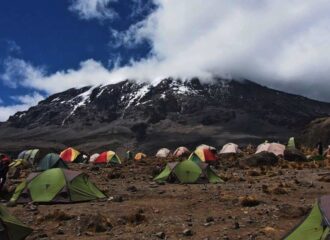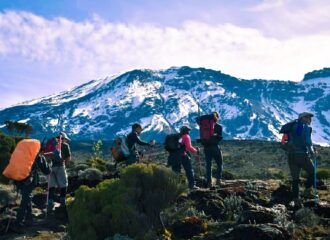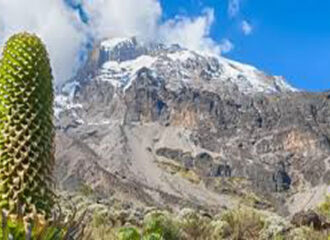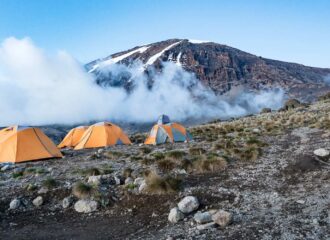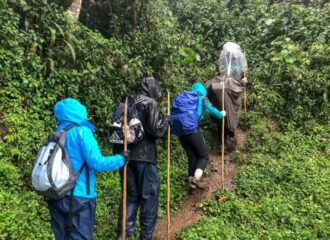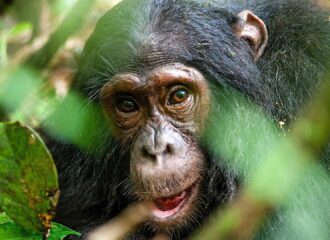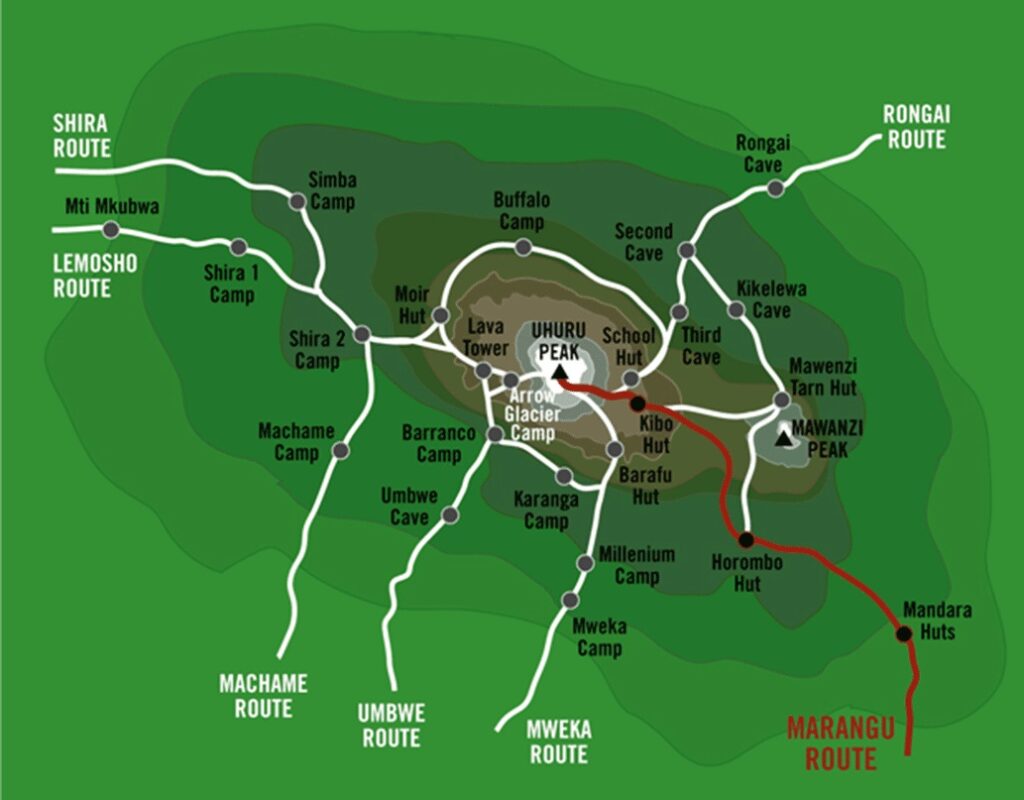Day 0: Arrive in Arusha
Arrive Kilimanjaro international airport and transferred to your lodge in either Arusha or Moshi for overnight.
Day 1: Marangu Gate (1,828m) to Mandara Hut (2,743m)
Elevation Gain: 915 meters
Hiking Time: 3 to 5 hours
Distance: 6 kilometers
This morning you drive (about 3 hours) through Kilimanjaro semi-tropical foothills to Marangu (1,372m), situated on the south-eastern side of the mountain. As you drive, there are usually some excellent views of the snow-capped peak. On arrival at Marangu gate, you meet your team of guides and porters, pick up any last minute supplies for the trek, and head to the entrance of Mount Kilimanjaro National Park to register for the climb. From the cluster of buildings at the gate it is some four to five hours walk through patches of coffee plantation and dense rainforest to Mandara Hut. The forest teems with brightly-coloured bird life, colobus and other varieties of monkey. The flora includes numerous mosses, lichens and flowers, as well as delicate orchids. If the skies are clear you may have fine views over the town of Moshi lying at the edge of the plain far below.
The A-frame MandaraHuts(meal time)can accommodate up to seventy people and consist of several sleeping huts and a dining area. All of Marangu’s huts have beds with mattresses and pillows. During high season, overnight stay Mandara Hut.
Day 2: Mandara Hut (2,743m) to Horombo Hut (3,720m)
Elevation Gain: 977 meters
Hiking Time: 5 to 7 hours
Distance: 11 kilometers
After breakfast, follow the ascending path through the alpine – meadow. The altitude begins to change and slowdown your pace while enjoying the flora and the view of Mawenzi and Kibo peaks. Arrive at the Horombo Hut 12km from Mandara. Meals and overnight at the hut.
Although extremely busy, the Horombo Huts are considered to be the nicest lodging on Kilimanjaro. The small, A-frame buildings can accommodate up to eight people each and provide lodging for hikers ascending, descending and acclimatizing. Horombo can accommodate up to one hundred hikers and many more porters, cooks and guides. There is only one dining hut at Horombo, overnight at Horombo Hut
Day 3: Horombo Hut (3,720m) to Kibo Hut (4,750m)
Elevation Gain: 1,030 meters
Hiking Time: 5 to 6 hours
Distance: 11 kilometers
After breakfast, resume the climb, the landscape becomes rugged and rocky. Lobelias begin to appear. Climb to Kibo Hut.Meals and overnight at the hut. The Kibo huts are made of stone and are not very warm. Make sure you have a four-season sleeping bag or a three-season bag with an extra sleep sheet. Most hikers experience some of the effects of altitude sickness at this point. Be sure you are aware of altitude sickness symptoms, and if you are feeling very sick, please tell your guide.
Day 4: Kibo Hut (4,750m) to Summit (5,895m) to Horombo Hut (3,720m)
Elevation Gain: 1,145 meters
Hiking Time: 12 to 15 hours
Distance to Uhuru: 5 kilometers
Distance from Uhuru to Horombo: 16 kilometers
The beginning of the last ascent is made in the wee hrs of the morning while the scree is still frozen. Climb the very steep part of the route to GILMANS POINT (most difficult and tiring part). UHURU PEAK is reached within an hour’s walk along the crater rim. (19,344ft). Start the walk along the craters rim. (19,344ft). Start the descent to Horombo hut for overnight.
Day 5: Horombo Hut (3,720m) to Marangu Gate (1,828m)
Elevation Loss: 1,892 meters
Distance: 17 kilometers
Hiking Time: 4 to 5 hours
The pace quickens as you continue your triumphant way back down across alpine meadow and past Mandara Hut through the rainforest to Marangu Gate where you board the vehicle for the journey back to Arusha or Moshi.












